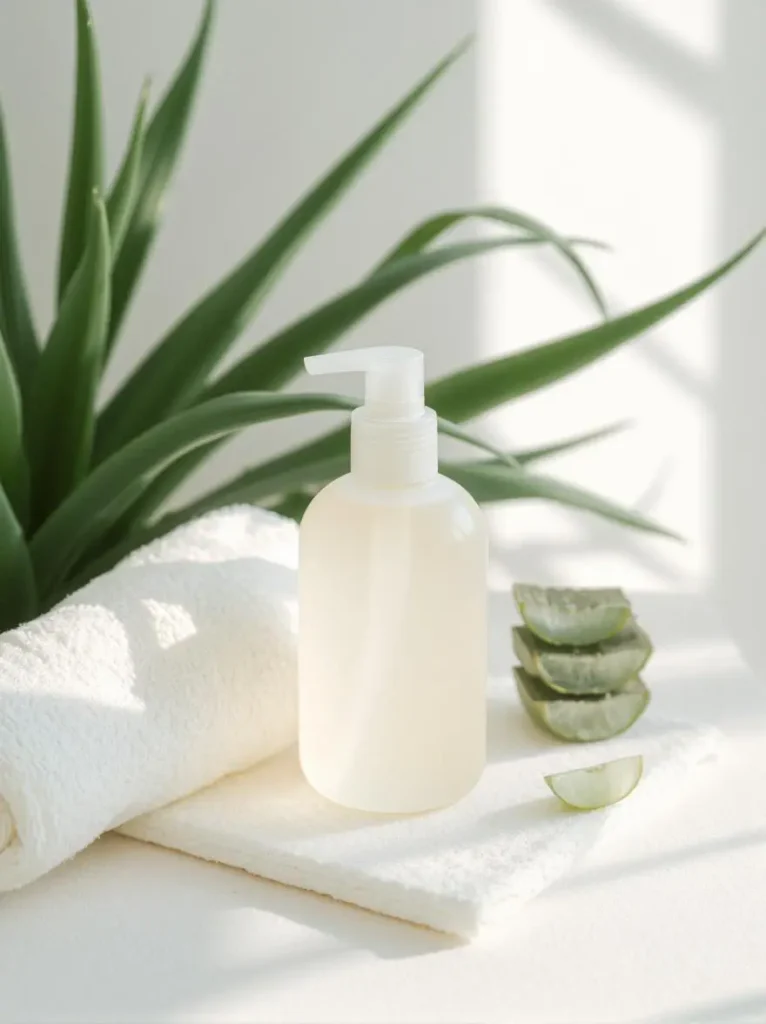If you’re struggling with dry patches on your face, you’re not alone. Many people experience flaky, uncomfortable skin that can make you feel self-conscious and even lead to irritation. The good news is that understanding the root causes and using natural remedies can help restore your skin’s moisture balance and radiance.
In this guide, we’ll explore three common causes of dry patches on the face and provide you with natural, science-backed solutions to fix them. Whether you’re new to skincare or have battled dry skin for years, these tips can help you achieve a smoother, more hydrated complexion.
Table of Contents
Understanding Dry Patches on the Face
Dry patches on your face are areas where the skin has lost its natural moisture, resulting in a flaky, rough texture. They may appear as small, isolated spots or spread across larger areas of your face. Dry skin can be uncomfortable, sometimes even itchy, and if left untreated, it may lead to redness or irritation.
Key Characteristics of Dry Skin:
- Flakiness or peeling
- Tightness, especially after washing
- Rough texture
- Occasional redness or irritation
Dry skin is a common concern that can be influenced by various internal and external factors. Identifying these factors is crucial in tailoring your skincare routine to better address your skin’s needs.
3 Common Causes of Dry Patches
1. Lack of Hydration and Moisture

Cause Overview:
One of the primary reasons for dry patches is simply that your skin isn’t getting enough moisture. This can happen if you’re not drinking enough water or if your skincare routine doesn’t include proper moisturization. Dehydration can affect not only your overall health but also the appearance and function of your skin.
Natural Solutions:
- Hydrate from Within:
Drinking plenty of water is fundamental. Aim for at least eight 8-ounce glasses a day. Proper hydration helps maintain skin elasticity and can improve the overall texture of your face. - Use Natural Oils:
Incorporate natural oils like coconut oil, argan oil, or jojoba oil into your routine. These oils act as emollients, locking in moisture and creating a protective barrier on the skin. For example, apply a few drops of coconut oil after washing your face to seal in hydration. - Aloe Vera:
Aloe vera is renowned for its soothing and hydrating properties. Applying a thin layer of pure aloe vera gel can calm irritated skin while providing moisture. - Honey:
Honey is a natural humectant, meaning it draws moisture from the air into your skin. Use raw honey as a face mask by applying it to dry areas for 10–15 minutes before rinsing off with lukewarm water.
Expert Tip:
Dermatologists often recommend using non-comedogenic moisturizers (those that don’t clog pores) to ensure hydration without causing breakouts. Look for products that include natural ingredients such as glycerin and hyaluronic acid.
2. Over-Cleansing and Harsh Skincare Products

Cause Overview:
While keeping your face clean is important, over-cleansing or using harsh products can strip your skin of its natural oils, leaving it dry and vulnerable. Many conventional cleansers and scrubs contain chemicals and fragrances that may irritate sensitive skin.
Natural Solutions:
- Gentle Cleansing:
Opt for a mild, fragrance-free cleanser that is designed for dry or sensitive skin. Avoid using hot water; instead, use lukewarm water to wash your face, as hot water can further dehydrate your skin. - Limit Exfoliation:
Exfoliating is beneficial for removing dead skin cells, but overdoing it can damage the skin barrier. Use natural exfoliants like oatmeal or a gentle scrub made with sugar once or twice a week to avoid irritation. - DIY Cleansing Options:
Consider natural cleansers such as a diluted solution of apple cider vinegar (1 part vinegar to 3 parts water) that can help balance your skin’s pH without harsh chemicals. - Moisturizing Routine:
After cleansing, always follow up with a good moisturizer. Look for ingredients like aloe, chamomile, and calendula, which help soothe and repair the skin barrier.
Real-Life Example:
Jessica switched from a conventional foaming cleanser to a gentle cream cleanser and noticed her dry patches began to fade within a few weeks. Pairing this change with a natural honey mask further improved her skin’s hydration.
3. Environmental Stress and Seasonal Changes

Cause Overview:
Your environment plays a significant role in skin health. Cold weather, low humidity, and exposure to wind or sun can exacerbate dry patches. During winter, the drop in humidity and indoor heating can strip moisture from your skin, while in summer, excessive sun exposure may lead to dryness and damage.
Natural Solutions:
- Humidify Your Space:
Use a humidifier in your home, especially during the winter months, to maintain an optimal moisture level in the air. This can prevent your skin from drying out while indoors. - Sun Protection:
Protect your skin from harsh UV rays by applying a natural, broad-spectrum sunscreen daily. Ingredients like zinc oxide provide effective sun protection without irritating sensitive skin. - Natural Masks:
Apply nourishing masks that are rich in antioxidants and fatty acids. Avocado masks, for instance, provide a boost of moisture and essential nutrients. Mash half an avocado with a teaspoon of honey and apply it to your face for 15 minutes before rinsing off. - Herbal Remedies:
Chamomile and green tea have anti-inflammatory properties. Steep a cup of green tea, let it cool, and use it as a facial rinse to soothe and hydrate your skin.
Expert Insight:
According to the American Academy of Dermatology, maintaining a consistent skincare routine and protecting your skin from environmental aggressors is key to preventing dryness and maintaining overall skin health.
Putting It All Together: A Natural Routine for Hydrated, Healthy Skin
Creating a natural skincare routine that addresses dry patches on your face involves a few simple steps:
- Cleanse Gently:
Use a gentle, natural cleanser and avoid over-cleansing. Rinse with lukewarm water to prevent further moisture loss. - Hydrate Immediately:
After cleansing, apply a natural moisturizer that contains ingredients like aloe vera, coconut oil, or glycerin. This helps lock in moisture and soothes dry patches. - Treat with Natural Masks:
Incorporate a weekly mask treatment using ingredients such as honey, avocado, or oatmeal. These natural masks provide a concentrated dose of moisture and nourishment. - Protect Your Skin:
Whether you’re indoors or stepping outside, protect your skin with natural barriers. Use a humidifier in dry environments, and always apply a natural sunscreen when exposed to sunlight. - Monitor and Adjust:
Pay attention to how your skin responds. If you notice persistent dryness or irritation, consider adjusting your routine or consulting a dermatologist to ensure that no underlying skin conditions are at play.
Real-Life Success Stories
Many individuals have transformed their skin using natural remedies. For instance, Laura, a busy professional, began incorporating a simple routine: switching to a gentle cleanser, applying coconut oil after every wash, and using a honey mask once a week. Within a month, her skin appeared more hydrated, and the dry patches diminished noticeably.
Similarly, Michael, who used to suffer from severe winter dryness, started using a humidifier at home and switched to natural skincare products. His consistent routine not only improved his skin’s hydration but also reduced irritation, allowing him to enjoy the winter months without worry.
FAQs
Can natural remedies completely replace chemical treatments for dry skin?
Natural remedies can be highly effective for managing dry skin and preventing dry patches, especially for mild to moderate cases. However, if you have severe or persistent dryness, it’s best to consult a dermatologist for personalized advice.
How long does it take to see results from natural skincare routines?
Results may vary, but many users notice improvements within 2 to 4 weeks of consistently following a natural skincare routine. Patience and regular care are key to long-lasting results.
Are there any side effects of using natural oils on the face?
Most natural oils are safe for use, but everyone’s skin is different. It’s recommended to perform a patch test before applying any new product to your face. If you have sensitive or acne-prone skin, look for non-comedogenic oils like argan or jojoba oil.
What environmental factors contribute most to dry skin?
Low humidity, cold weather, indoor heating, and excessive sun exposure are common environmental factors that can lead to dry skin. Adjusting your routine seasonally can help mitigate these effects.
Can diet affect dry patches on the face?
Absolutely. A diet rich in omega-3 fatty acids, vitamins A, C, and E, and antioxidants can help improve your skin’s health from the inside out. Drinking plenty of water and consuming foods like salmon, walnuts, and leafy greens support skin hydration and repair.
Conclusion
Dry patches on your face can be frustrating, but they don’t have to be a permanent problem. By understanding the root causes lack of hydration, over-cleansing, and environmental stress and implementing natural remedies, you can restore moisture and achieve a healthy, radiant complexion. Remember, consistency is key in any skincare routine, and sometimes a few simple changes can yield remarkable results.
Embrace natural ingredients, protect your skin from environmental aggressors, and tailor your routine to meet your unique needs. Your journey to healthier, more hydrated skin starts with small, mindful steps. Happy gardening for your skin, and enjoy the natural glow that comes with proper care!



